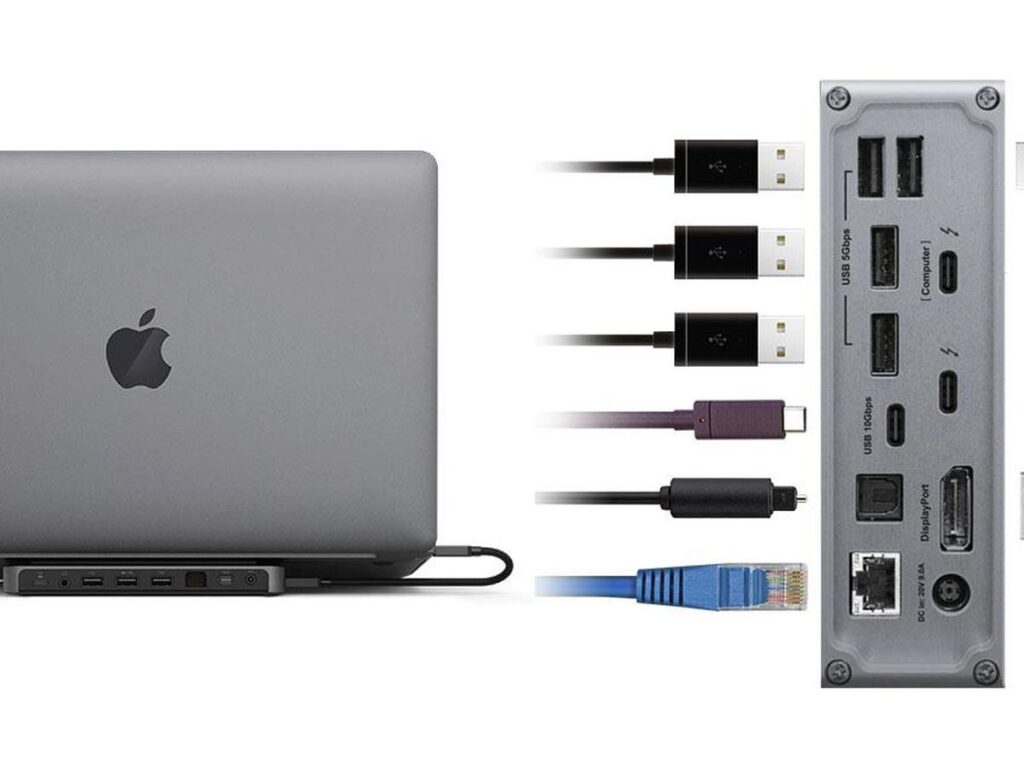
But there would be a speed compromise, as Thunderbolt 2 delivers speeds up to 20Gbps. At the recent Mobile World Congress, USB Implementers Forum (USB-IF) officials said that it is possible to carry the Thunderbolt protocol on USB 3.1 copper and optical wires, and Intel hasn’t dismissed that idea either. LaCie just announced a USB 3.0 drive with a USB-C connector to fit the new MacBooks, but it won’t have USB 3.1 throughput speeds.Ī few years ago, Apple turned to Thunderbolt as its main high-speed connector in Macs, but the arrival of the USB 3.1 port doesn’t mean that protocol will disappear. The lack of peripherals is a problem also faced by Thunderbolt, a faster but more expensive connector technology used in other Macs.
For one, don’t expect USB 3.1 flash drives to go on sale in the next couple of years.
#MACBOOK USB C FULL#
In tests, USB 3.1 connections aren’t reaching the full throughput of 10Gbps, but speeds will get faster as the controllers and chipsets are refined. USB 3.1 chipsets are still being developed and tested, and it could be months before peripherals start appearing. You can plug older USB devices in, but you’ll need this $19 adapter. The MacBook comes with a USB Type-C charging cable, and the others will need to be bought separately. There are other cables besides Type-C for the MacBook to connect to older USB and micro-USB ports. This means all devices running on USB 3.0 and USB 2.0 will be able to talk with the MacBook port. USB 3.1 (via a Type C connector) is the one and only IO port on the new MacBook. Here are some things to know about the USB 3.1 port in the 12-inch MacBook, and where it may be headed in the future. Apple is clearly looking ahead with USB 3.1, which supports DisplayPort, VGA, HDMI and ethernet protocols. The MacBook is just 13.1 millimeters thick and its base is dominated by batteries.

There’s also excitement around the MacBook’s USB-C cable, which is the same on both ends so users can flip cables and not worry about plug orientation.Īpple incorporated one USB 3.1 port, ostensibly for lack of space. The USB 3.1 port in the new MacBook will initially transfer data at 5Gbps, but expect that number to go up in future iterations, as the technology develops. USB 3.1 can technically transfer data between the host computers and peripherals at maximum speeds of up to 10Gbps (gigabits per second), which is two times faster than the current USB 3.0.

The MacBook is one of just a few devices to carry the new USB port. Apple laid out a similar challenge with its first MacBook Air in early 2008, which had just one USB 2.0 port to connect peripherals and a micro-DVI port to connect monitors.īut the faster USB 3.1 port is significant because it will also be used to recharge the MacBook, as well as to connect to a wider variety of peripherals such as monitors, external storage drives, printers, and cameras. Apple is challenging laptop users to adapt to fewer ports with the bold design of its new 12-inch MacBook, which has just one USB-C port using the USB 3.1 standard, as well as a regular headphone jack.


 0 kommentar(er)
0 kommentar(er)
